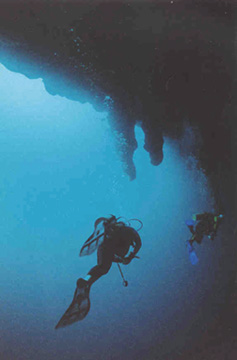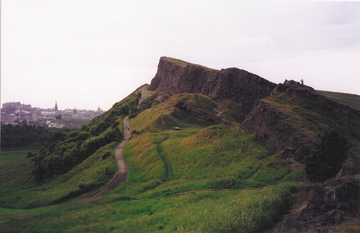Every month, we'd like to feature one of your photos from anywhere in the world and invite other readers to guess where it was taken. Look every month in the print Geotimes for a new photo. Following are clues, answers and winners from past issues.


| Do you have slides and photos
you've collected from field work or vacations?
Every month, we'd like to feature one of your photos from anywhere in the world and invite other readers to guess where it was taken. Look every month in the print Geotimes for a new photo. Following are clues, answers and winners from past issues. |
 |
| Send answers for the March 2003 Where on Earth?
contest, which appears the print magazine, to Geotimes by March 31 (or postmarked
by this date). From those answers, Geotimes staff will draw the names of
10 people who will win Where on Earth? T-shirts. And from those 10 names,
we will draw the names of two people who will win a Brunton
compass.
Click here
to submit a guess for this month's Where on Earth?
contest. Submit
photos for Where on Earth? |

|
Clues:
1. Now underwater, this feature was a subaerially exposed cave during the last Ice Age approximately 18,000 years ago. More than 400 feet deep, it was thought to be bottomless until the French explorer Jacques Cousteau proved otherwise during a 1970 expedition. 2. Researchers are using core samples from stalactites like those pictured to test a hypothesis that relates Saharan desert dust storm activity to the development of algal blooms and other pathogens in this region. 3. The feature’s name and its appearance from the air are similar to that of an astronomical feature with a gravitational field so intense that not even light can escape.
Scroll down for the answer
|
|
Answer:
Great Blue Hole, Lighthouse
Reef Atoll, Belize |

|
Clues:
1. Although this Carboniferous teschenite sill shares its name with a cathedral that has the highest medieval spire in the world, the two namesakes sit at opposite ends of their island nation. 2. The “father of modern geology” used a section at the base of the sill to argue that an injection of molten rock had broken apart existing sedimentary layers. This observation contradicted the prevailing Neptunist theory that all rocks settled out of the noachian flood. 3. At the far upper left, a castle sits on a volcanic plug of similar age to the foreground sill. Despite the sheer walls provided by the extinct volcano, the castle was repeatedly under siege during the region’s wars of independence.
Scroll down for the answer
|
|
Answer:
Salisbury Crags; Edinburgh |
January winners:
1. Dale C. Andrews, Pittsburgh, Pa.
2. Kirby Cockerham, Englewood, Colo.
3. Larry Davis, West Haven, Conn.
4. Margaretha Eckhardt, Arlington, Mass.
5. David Grisafe, Lawrence, Kan.
6. Anthony R. Kampf, Los Angeles, Calif.
7. John Longshore, Arcata, Calif.
8. Candy Martinez, Fremont, Calif.
9. Maria Skidmore, Warrington, Pa.
10. Jerry Tarbell, Hampstead, Md.
 |
Geotimes Home | AGI Home | Information Services | Geoscience Education | Public Policy | Programs | Publications | Careers |